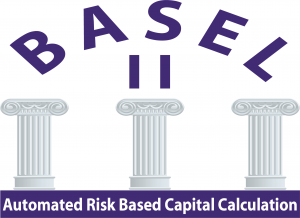In one of our previous blogs, we had initiated a discussion on the BASEL accords- a set of recommendations on banking regulations aimed at ensuring adequate capital for financial institutions such that they can absorb unexpected loss. Presently, we try to dig deeper into the different characteristics of the accords and their recommendations for capital adequacy.
As a regulatory capital requirement framework BASEL has evolved over time. The first set of Basel accords, BASEL-I created a risk insensitive minimum capital requirement. BASEL-II has been a huge development over its ancestor, as it had explicit emphasis on identifying different risk sources and allocating financial capital for each of them. BASEL-III is a more conservative version of BASEL-II. In this blog, we will focus on explaining minimum capital requirements prescribed in BASEL-II.

The minimum capital requirements are defined as the capital required, covering the three main areas of risk: Credit Risk, Operational Risk and Market Risk. Credit risk is the risk that arises from the default of making required payments on debt. Operational risk arises from failed internal processes (such as legal risk. Strategy and Reputation risk falls outside the purview). Market risk arises from losses on and off balance sheet position arising from movement in market prices. For the estimate of minimum capital requirements, the Risk-Weighted Assets must be calculated.
Why are Risk-Weighted Assets important in calculating minimum capital requirement?
Not all assets in a bank’s balance sheet are equally risky. For e.g. cash in an ATM is safer than a sub-prime mortgage. So regulatory capital must be set in relation to the riskiness of the asset rather than just by the value of the asset in the balance sheet. For Risk weighting asset, off-balance sheet as well as on-balance sheet items must be included. The idea is to prevent banks from creating tons of off-balance sheet assets and claiming there’s no risk at all. Off-balance sheet items include: financial instruments like forwards & future options, credit default swaps etc. Basel II prescribes the following risk weights across asset classes:
| Assets | Risk Weights |
| Cash and Equivalents | 0% |
| Residential Mortgages | 35% |
| Credit/ auto loans | 75% |
| Commercial Real Estate | 100% |
| Govt. Securities | By Rating |
| Interbank loans/Corporate Loans | By Rating |
| Other assets | 100% |